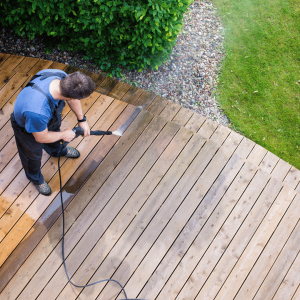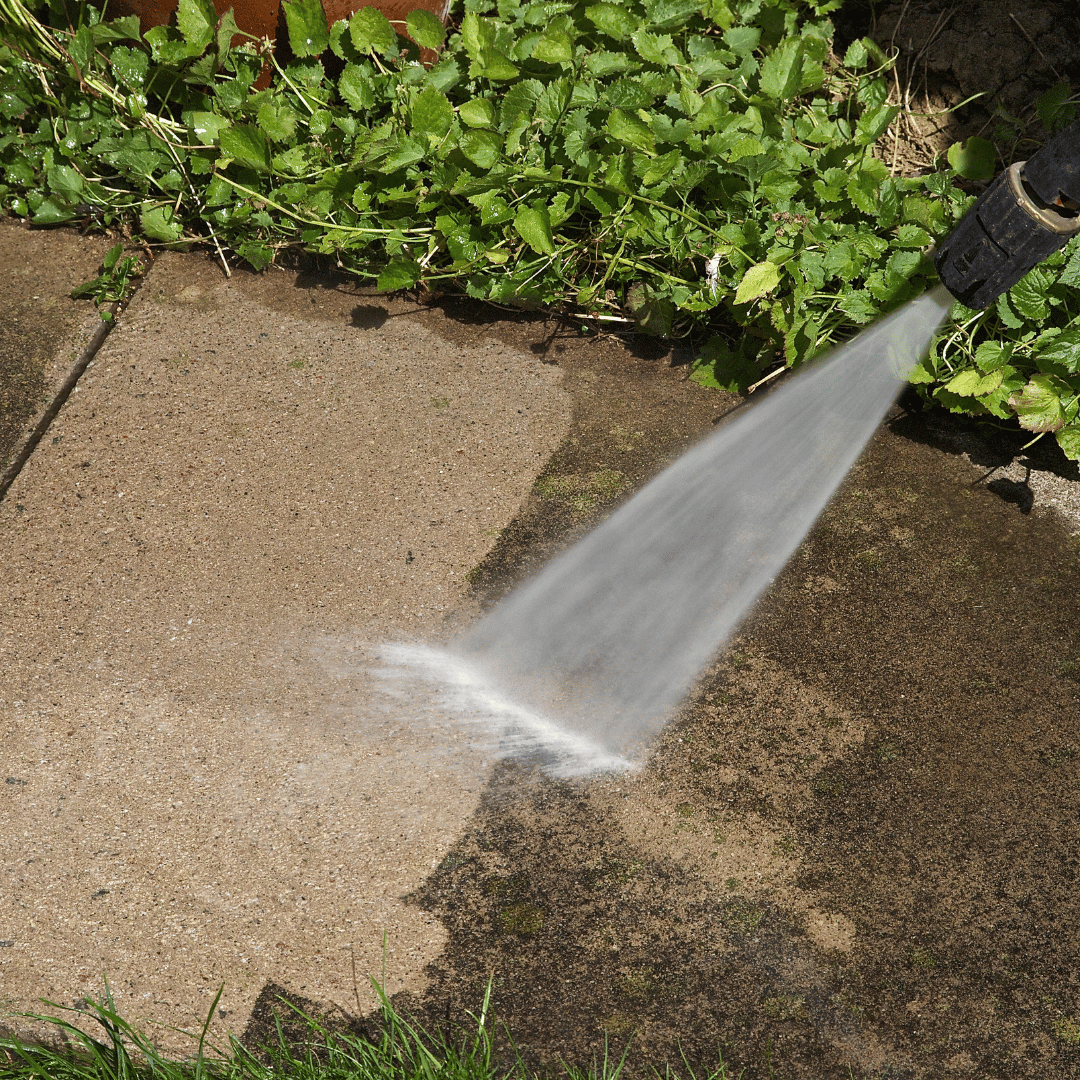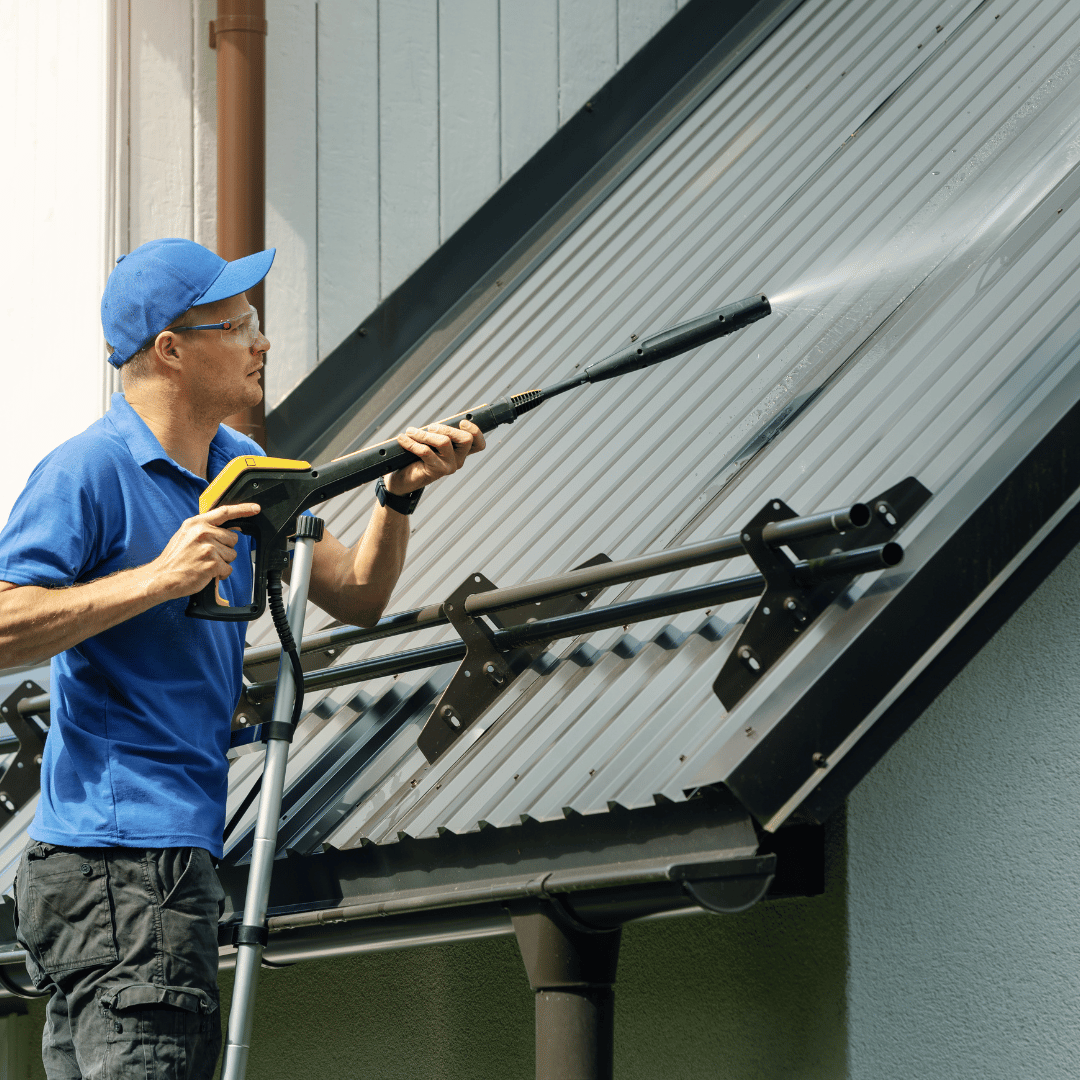
A Guide on How To Revitalize Your Outdoor Space Using Deck Pressure Washing
Maintaining the beauty and integrity of your outdoor spaces is essential, especially when it comes to your deck. Over time, decks can accumulate dirt, grime, mildew, and even algae, detracting from their appearance and potentially leading to damage. This is where deck pressure washing services come into play.
Pressure washing is an effective way to restore your deck’s original luster while extending its lifespan. Not only does it enhance the aesthetic appeal of your outdoor area, but it also helps to prevent costly repairs down the line. In this article, we will explore the benefits of pressure washing your deck, how to prepare for the process, common issues that may arise, and when it’s best to seek professional help. By incorporating these practices into your preventative home maintenance routine, you can ensure that your deck remains a welcoming space for family gatherings and outdoor relaxation for years to come.
Should You Pressure Wash a Deck?
Pressure washing your deck can be a game-changer for its overall appearance and longevity. However, it’s important to consider when and why this method is appropriate. Here are some key points to keep in mind:
Benefits of Pressure Washing a Deck
- Restores Appearance: Over time, decks can become dull and discolored due to dirt, mildew, and weather exposure. Pressure washing effectively removes these contaminants, restoring your deck to its original beauty.
- Prevents Damage: Regular cleaning can prevent the buildup of mold and mildew, which can compromise the integrity of the wood. By pressure washing, you can eliminate these harmful substances before they cause significant damage.
- Enhances Safety: A clean deck is not only visually appealing but also safer. Slippery algae or mildew can lead to slips and falls. Pressure washing removes these hazards, ensuring a safer outdoor space for family and guests.
When to Pressure Wash
- Before Staining or Sealing: If you plan to apply a new coat of stain or sealant, pressure washing is essential. It prepares the surface by removing old finishes and debris, allowing for better absorption and adhesion of the new product.
- Post-Winter Cleaning: After winter, decks often accumulate debris, ice, and dirt. A thorough pressure wash can help refresh the surface and prepare it for spring and summer use.
- Annual Maintenance: Incorporating pressure washing into your annual exterior home maintenance routine can help maintain your deck’s condition and extend its lifespan.
While pressure washing has many benefits, it’s essential to assess the condition of your deck and determine the best cleaning method. In the following sections, we’ll explore how to prepare your deck for pressure washing and address common issues that may arise during the process.
Preparing Your Deck for Pressure Washing
Proper preparation is key to achieving the best results when pressure washing your deck. Taking a few moments to set up can ensure a thorough clean while minimizing potential damage. Here are the essential steps to prepare your deck for pressure washing:
1. Clear the Area
- Remove Furniture and Accessories: Before you start, take off any furniture, potted plants, or accessories on the deck. This not only protects them from damage but also gives you unobstructed access to the entire surface.
- Sweep the Deck: Use a broom to sweep away loose debris, leaves, and dirt. This step helps to prevent debris from clogging your pressure washer and allows for a more effective cleaning process.
2. Inspect the Deck
- Check for Damage: Before pressure washing, inspect the deck for any loose boards, nails, or signs of rot. Addressing these issues beforehand can prevent further damage during cleaning.
- Look for Mold or Mildew: Identify areas with visible mold or mildew. Treating these spots with a cleaner before pressure washing can enhance the effectiveness of the process.
3. What to Spray on a Deck Before Pressure Washing
- Pre-Treatment Solutions: Many experts recommend applying a deck cleaner or pre-treatment solution to break down dirt and stains before pressure washing. Look for a biodegradable solution that targets mold and mildew, ensuring it’s safe for your deck material.
- Dilution Instructions: Follow the manufacturer’s instructions for dilution and application. Typically, you’ll spray the solution onto the deck and let it sit for 10-15 minutes to penetrate the grime.
4. Safety Precautions
- Protect Yourself: Wear appropriate safety gear, including gloves, goggles, and a mask, especially if you’re working with chemical cleaners. Ensure proper ventilation if you’re using any strong cleaning solutions.
- Check Your Equipment: Ensure that your pressure washer is in good working condition. Check the nozzle settings and make sure you have the right pressure level for your deck material. Generally, a lower pressure setting (around 1200 to 1500 PSI) is recommended for wood decks to avoid damage.
By taking these preparation steps, you can maximize the effectiveness of your deck pressure washing services and ensure a successful cleaning process. In the next section, we will address some common issues that may arise after power washing your deck and how to mitigate them.
Common Issues After Power Washing
While pressure washing can effectively clean your deck, it may sometimes lead to undesirable outcomes. Understanding these common issues can help you prepare and prevent them. Here are a few concerns you might encounter after power washing your deck, along with tips on how to address them:
1. Fuzziness on the Surface
- What Causes Fuzziness?: After power washing, some wood decks may appear fuzzy or rough to the touch. This occurs when the pressure of the water forces the wood fibers to raise, leading to a textured surface.
- How to Prevent It: To minimize fuzziness, use a lower pressure setting when washing and avoid holding the nozzle too close to the wood. Additionally, consider using a fan tip nozzle, which disperses the water more evenly.
- Post-Wash Solution: If your deck feels fuzzy after washing, lightly sand the surface with a fine-grit sandpaper once it has dried. This will help smooth out any raised fibers and prepare the surface for staining or sealing.
2. Uneven Cleaning
- Why It Happens: If certain areas of the deck are cleaner than others, it could be due to uneven pressure application or inadequate cleaning solution distribution.
- Solution: Ensure you cover the entire surface evenly, using overlapping strokes. For particularly dirty spots, consider applying additional cleaner and allowing it to sit longer before washing.
3. Staining or Discoloration
- Potential Issues: If your deck has been stained previously, you may notice that some areas look different after pressure washing. This can happen if the old stain hasn’t been completely removed or if new stains are introduced during the cleaning process.
- Preventative Measures: To avoid this issue, always test a small, inconspicuous area before washing the entire deck. If you’re applying a new stain after washing, be sure to allow the wood to dry thoroughly for at least 24 hours.
4. Water Damage
- What to Watch For: If water seeps into the wood and remains trapped, it can lead to issues like warping, cracking, or mold growth. This is particularly a concern in rainy weather or if the deck isn’t allowed to dry properly.
- Preventing Water Damage: Ensure you wash your deck on a dry day, allowing sufficient time for the wood to dry after cleaning. Additionally, consider applying a sealant after your deck has dried to help repel water and protect against moisture.
By being aware of these potential issues, you can take proactive steps to ensure a successful power washing experience. In the next section, we will discuss best practices for pressure washing a deck, including recommended cleaning solutions and techniques to achieve optimal results.
Best Practices for Pressure Washing a Deck
To achieve the best results when pressure washing your deck, it’s essential to follow best practices that ensure effective cleaning while protecting the wood. Here’s a comprehensive guide on how to properly pressure wash your deck:
1. Choosing the Right Equipment
- Pressure Washer Type: For most residential decks, an electric pressure washer with a PSI (pounds per square inch) rating of 1200 to 1500 is sufficient. Gas-powered models typically have higher PSI ratings but can be too powerful for softer woods, so be cautious if you choose this option.
- Nozzle Selection: Use a wide-angle nozzle (25 to 40 degrees) for a gentle spray. A narrower nozzle (15 degrees) can be used for tough stains, but be careful to maintain a safe distance from the wood to avoid damage.
2. Cleaning Solutions
- Eco-Friendly Cleaners: Opt for a biodegradable deck cleaner that targets mold, mildew, and dirt. Avoid harsh chemicals that could damage the wood or surrounding plants.
- Homemade Solutions: If you prefer a DIY approach, mix a solution of equal parts vinegar and water, or use baking soda mixed with water for a gentle scrub.
3. Technique for Washing
- Start from the Top: Begin washing from one end of the deck and work your way to the other, ensuring you wash from the highest point to the lowest. This allows any debris or cleaning solution to flow off the deck rather than pooling in areas.
- Keep a Steady Distance: Maintain a consistent distance of about 12 to 18 inches from the deck surface to prevent gouging the wood. Adjust the distance based on the pressure level and type of wood.
- Use Even, Overlapping Strokes: Move the nozzle in a steady, sweeping motion, overlapping each stroke slightly to avoid streaks or missed spots. This technique helps ensure even coverage across the entire surface.
4. Rinsing and Drying
- Thorough Rinsing: After cleaning, rinse the deck with clean water to remove any remaining cleaning solution. This step is crucial to prevent residue buildup, which can affect any stains or sealants applied later.
- Allow Proper Drying Time: Let the deck dry completely before applying any stain or sealant. This could take anywhere from 24 to 48 hours, depending on the weather conditions.
5. Post-Wash Maintenance
- Regular Cleaning Schedule: To maintain your deck’s appearance and prolong its lifespan, incorporate pressure washing into your regular exterior home maintenance routine. Aim to clean your deck at least once a year or more frequently if it experiences heavy use.
- Follow Up with Staining or Sealing: Consider applying a protective stain or sealant after washing to enhance the deck’s durability and resistance to moisture and UV damage. This step not only improves the appearance but also helps prevent future mold and mildew growth.
By following these best practices, you can effectively clean your deck while ensuring it remains in excellent condition for years to come. In the next section, we will address specific considerations and guidelines regarding when to avoid pressure washing your deck to prevent damage.
When Not to Pressure Wash a Deck
While pressure washing is an effective way to clean your deck, there are specific situations when it’s best to avoid this method to prevent damage. Here are key considerations to keep in mind regarding when not to power wash your deck:
1. When the Wood is Wet or Damp
- Risk of Damage: Pressure washing a damp deck can cause the water to seep deeper into the wood, leading to potential mold and mildew issues. Wet wood is more susceptible to warping and splintering under high-pressure water.
- Best Practice: Always ensure the deck is completely dry before beginning the washing process. Choose a sunny day to maximize drying time, ideally waiting at least 24 hours after rain.
2. If the Deck is Old or Compromised
- Condition Check: Inspect the deck for any signs of significant wear, such as deep cracks, splintering, or rotting wood. Power washing can exacerbate these issues, causing further damage.
- Alternative Cleaning Methods: For older decks, consider using a gentler cleaning method, such as scrubbing with a soft brush and a mild cleaner, rather than high-pressure washing.
3. During Extreme Weather Conditions
- Temperature Considerations: Avoid pressure washing during extremely hot or cold weather. High temperatures can cause cleaning solutions to dry too quickly, leading to streaks and ineffective cleaning. Conversely, cold weather can result in ice forming on wet surfaces.
- Wind and Rain: Strong winds can carry debris and dirt back onto the freshly washed deck, while rain can wash away the cleaning solution before it has a chance to work effectively.
4. If Staining or Sealing is Planned Soon
- Timing Matters: If you plan to stain or seal your deck shortly after washing, be cautious. Stains and sealants require the wood to be completely dry. Power washing introduces moisture that can take longer to evaporate, delaying your project.
- Recommendation: Allow adequate drying time—typically 24 to 48 hours—after washing before applying any new stains or sealants. This step is crucial for ensuring the best adhesion and durability.
5. If the Deck Has Specific Features
- Delicate Fixtures: If your deck has intricate features like decorative railings, delicate furniture, or plants close by, high-pressure washing may cause unintended damage.
- Adjusting Techniques: If you need to wash in these areas, consider using a lower-pressure setting or a handheld sprayer for more control over the water flow, protecting both the deck and surrounding items.
By understanding these scenarios where pressure washing may not be suitable, you can protect your deck from unnecessary damage and ensure it remains a safe and inviting outdoor space. In the next section, we will summarize the key points discussed and provide additional resources for maintaining your deck and ensuring its longevity.
Ensuring a Clean and Lasting Deck
Pressure washing your deck is an excellent way to restore its beauty and maintain its longevity, provided it’s done correctly and at the right time. Following the best practices outlined in this article will help you achieve a thorough clean while protecting the integrity of your deck. Here’s a quick recap of the essential points:
- Choose the Right Equipment: Select an appropriate pressure washer and nozzle to avoid damaging the wood.
- Use Proper Cleaning Solutions: Opt for eco-friendly cleaners that effectively target dirt and grime without harming the environment.
- Master the Technique: Apply consistent pressure, keep a safe distance, and use even strokes to ensure thorough coverage.
- Know When to Avoid Washing: Be mindful of conditions that could harm your deck, such as wet wood, extreme weather, or when the deck is in poor condition.
Regular maintenance, including gutter cleaning, window washing, and dryer vent cleaning, along with periodic pressure washing, can significantly enhance your home’s exterior appearance and safety. At HomeSmiles, we offer comprehensive preventative home maintenance services to ensure your home remains in top shape year-round.
If you’re ready to restore your deck or require assistance with any other home maintenance tasks, contact us today! Let HomeSmiles help you tackle those “honey-do” items on your list, ensuring your home stays beautiful and functional while avoiding costly repairs down the line.
Reach out to HomeSmiles now for expert deck pressure washing services or to learn more about our extensive range of preventative maintenance solutions! Your home deserves the best care, and we’re here to provide it.
- Protecting Your Property: Why the Right Cleaning Method Makes All the Difference
- The #1 Thing That’s Dulling Your Curb Appeal (And How to Fix It)
- How Maintenance Bundles Provide Peace of Mind for Busy Small Business Owners and Facility Managers
- Essential vs. Complete Home Packages: Choosing the Right Preventive Care for Your Property
- How a Simplified Service Model Benefits Both Homeowners and Franchisees Alike


